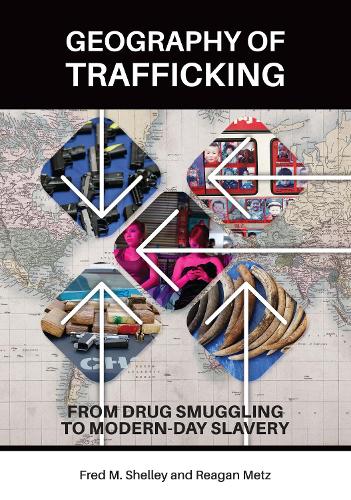
Geography of Trafficking: From Drug Smuggling to Modern-Day Slavery
(Hardback)
Publishing Details
Geography of Trafficking: From Drug Smuggling to Modern-Day Slavery
By (Author) Fred M. Shelley
By (author) Reagan Metz
Bloomsbury Publishing PLC
ABC-CLIO
27th October 2017
United States
Classifications
Tertiary Education
Non Fiction
364.1336
Physical Properties
Hardback
384
Width 178mm, Height 254mm
964g
Description
This important reference work examines trafficking from a geographic perspective and investigates the driving forces behind it and the powers that are trying to curtail the problem. The worldwide crime of trafficking involves countless people, animals and animal parts, and illicit goods such as drugs and weapons being moved and sold illegally. Often, the trafficking occurs with the local government or law enforcement's knowledge and complicity. This one-volume encyclopedia sheds light on a frightening and major issue, investigating the geography of trafficking and examining a range of examples of illegal human, animal, drug, and weapons movement around the world. After a preface and introduction that provides an exact definition of trafficking, the encyclopedia presents thematic essays that explore the various specific kinds of trafficking. Approximately 30 country profiles describe who and what is trafficked in each country, the motivations of those doing the trafficking, where people and things are being moved to, how the trafficking occurs, and what actions are being taken in an effort to prevent it. An appendix of primary documents, interesting sidebars, a bibliography, and a glossary listing key terms and important organizations round out the work.
Author Bio
Fred M. Shelley is professor of geography and environmental sustainability at the University of Oklahoma. Reagan Metz is majoring in environmental sustainability at the University of Oklahoma.
